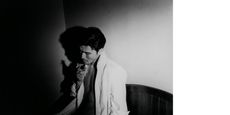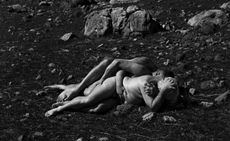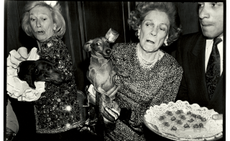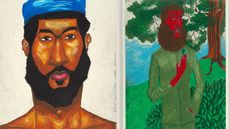Ian Schrager lifts the curtain on the bacchanal Studio 54 years

Studio 54 started and ended with a bang. The legendary nightclub fired onto New York’s burgeoning club scene in 1974, raged for seven years, before plunging into scandal with the rising dawn of the 1980s.
Its unlikely founders, then-junior lawyer Ian Schrager and his client Steve Rubell, who owned a small chain of steak restaurants, have become just as talked about as Studio 54 itself. Though Rubell passed away in 1985, Schrager has gone on to have unprecedented success.
The Steve Jobs of the hotelier world, Schrager founded the ‘boutique hotel’ category of luxury accomodation in the 90s, and has spearheaded the concept ever since. Most recently, Schrager opened the Herzog & de Meuron-designed Public hotel in New York.

The cover of Studio 54, published by Rizzoli
The behind the scenes goings-on of Studio 54, renowned for its writhing dance floor, fabulous guests and legal contretemps, has long been a source of intrigue. Nearly 40 years since its closing, Schrager has finally decided to immortalise its outrageous reign in book form.
‘Only one person can tell this story,’ he writes in the opening of Studio 54, a midnight-black and extravagantly embossed book published by Rizzoli, preparing us for the intimate, highly personal account that follows. Chapter to chapter, readers move to the very front of the golden-roped queue on West 54th Street, getting a rare glimpse behind those notoriously inaccessible black doors.
What follows is a riot of early sketches, plans and pages from Schrager’s scrapbook, anecdotes from its storied wassailers (from Andy Warhol to Debbie Harrie), and never before seen, access-all-areas, letters between Schrager, his lawyers, and the NYPD. Readers are given the VIP treatment (sans ‘alternating shots of Stoli with a hit of coke’ in the basement), served sketches of Paul Marantz’s famous lighting design, (along with a letter from the designer, who goes ‘on the record’ to ‘strongly urge’ Schrager to prohibit the use of the lighting rigs as climbing frames).
Comprehensive history this is not. But how could it be? Few who were there are likely to remember every chronological detail of their Studio 54 exprience. Misty memories are presented as such, with nebulous quotes and jumbles of fragmented photography tumbling from the pages.
Warhol wrote in his 1979 book, Andy Warhol’s Exposures: ‘Studio 54 is a dictatorship at the door, but a democracy on the dance floor.’ This book is that dance floor. Readers who weren’t lucky enough to be there, are made to feel as if they were. As Schrager writes, ‘This is for my family, children, and grandchildren to come... so they will know.’

Left, the entrance to Studio 54, where people paid. Ian Schrager always insisted that the black doors be kept closed, so that it was a processional when they were opened. Right, the famous, moveable tube banquettes facing the original DJ booth and a cut drop designed by Aerographics.

Andy Warhol with Lou Reed. © Rose Hartman

A construction meeting inside Studio 54 before it opened in 1974

Overflowing cornucopia at the Casablanca Records party celebrating the release of the Thank God It’s Friday soundtrack.

In the summer of 1978, Studio 54 closed for a rare few days in order to undergo a major renovation
INFORMATION
Studio 54, published by Rizzoli, £55
Wallpaper* Newsletter
Receive our daily digest of inspiration, escapism and design stories from around the world direct to your inbox.
Elly Parsons is the Digital Editor of Wallpaper*, where she oversees Wallpaper.com and its social platforms. She has been with the brand since 2015 in various roles, spending time as digital writer – specialising in art, technology and contemporary culture – and as deputy digital editor. She was shortlisted for a PPA Award in 2017, has written extensively for many publications, and has contributed to three books. She is a guest lecturer in digital journalism at Goldsmiths University, London, where she also holds a masters degree in creative writing. Now, her main areas of expertise include content strategy, audience engagement, and social media.
-
 Three new coffee makers for a contemporary brew, from a casual cup to a full-on branded espresso
Three new coffee makers for a contemporary brew, from a casual cup to a full-on branded espressoThree new coffee makers, from AeroPress, Jura and Porsche x La Marzocco, range from the defiantly manual to the bells and whistles of a traditional countertop espresso machine
By Jonathan Bell Published
-
 Don't miss Luxembourg's retro-futuristic lab pavilion in Venice
Don't miss Luxembourg's retro-futuristic lab pavilion in VeniceAs the Venice Biennale enters its last few weeks, catch 'A Comparative Dialogue Act' at the Luxembourg Pavilion
By Amah-Rose Abrams Published
-
 A Berlin park atop an office building offers a new model of urban landscaping
A Berlin park atop an office building offers a new model of urban landscapingA Berlin park and office space by Grüntuch Ernst Architeken offer a symbiotic relationship between urban design and green living materials
By Michael Webb Published
-
 Brutalism in film: the beautiful house that forms the backdrop to The Room Next Door
Brutalism in film: the beautiful house that forms the backdrop to The Room Next DoorThe Room Next Door's production designer discusses mood-boarding and scene-setting for a moving film about friendship, fragility and the final curtain
By Anne Soward Published
-
 'There’s an anxiety under all of it': Violet Dennison in New York
'There’s an anxiety under all of it': Violet Dennison in New YorkViolet Dennison debuts abstract paintings with new show 'Damaged Self' at Tara Downs Gallery
By Mary Cleary Published
-
 ‘Gas Tank City’, a new monograph by Andrew Holmes, is a photorealist eye on the American West
‘Gas Tank City’, a new monograph by Andrew Holmes, is a photorealist eye on the American West‘Gas Tank City’ chronicles the artist’s journey across truck-stop America, creating meticulous drawings of fleeting moments
By Jonathan Bell Published
-
 'I’m So Happy You Are Here': discover the work of Japanese women photographers
'I’m So Happy You Are Here': discover the work of Japanese women photographersSubtitled ‘Japanese Women Photographers from the 1950s to Now’, this new monograph from Aperture is a fascinating insight into a critically overlooked body of work
By Jonathan Bell Published
-
 Mark Armijo McKnight’s bodily landscapes capture the tactile serenity of the American West
Mark Armijo McKnight’s bodily landscapes capture the tactile serenity of the American WestThe artist’s new exhibition at the Whitney Museum, which is organised by the museum curator Drew Sawyer, offers a succinct window into his contemplative suggestion of queering a landscape
By Osman Can Yerebakan Published
-
 Dark, glamorous and hedonistic: a photography book captures New York in the 1990s
Dark, glamorous and hedonistic: a photography book captures New York in the 1990sNew York: High Life, Low Life, by Dafydd Jones, goes behind the scenes of New York society
By Hannah Silver Published
-
 Derrick Alexis Coard’s portraits are a sensitive, positive testimony to Black men
Derrick Alexis Coard’s portraits are a sensitive, positive testimony to Black menThe late artist Derrick Alexis Coard’s retrospective ‘I Am That I Am’, at New York’s Salon 94, honours his ‘symbolic expression for possible change for the African-American male community’
By Tianna Williams Published
-
 Intimacy, violence and the uncanny: Joanna Piotrowska in Philadelphia
Intimacy, violence and the uncanny: Joanna Piotrowska in PhiladelphiaArtist and photographer Joanna Piotrowska stages surreal scenes at the Institute of Contemporary Art at the University of Pennsylvania
By Hannah Silver Published